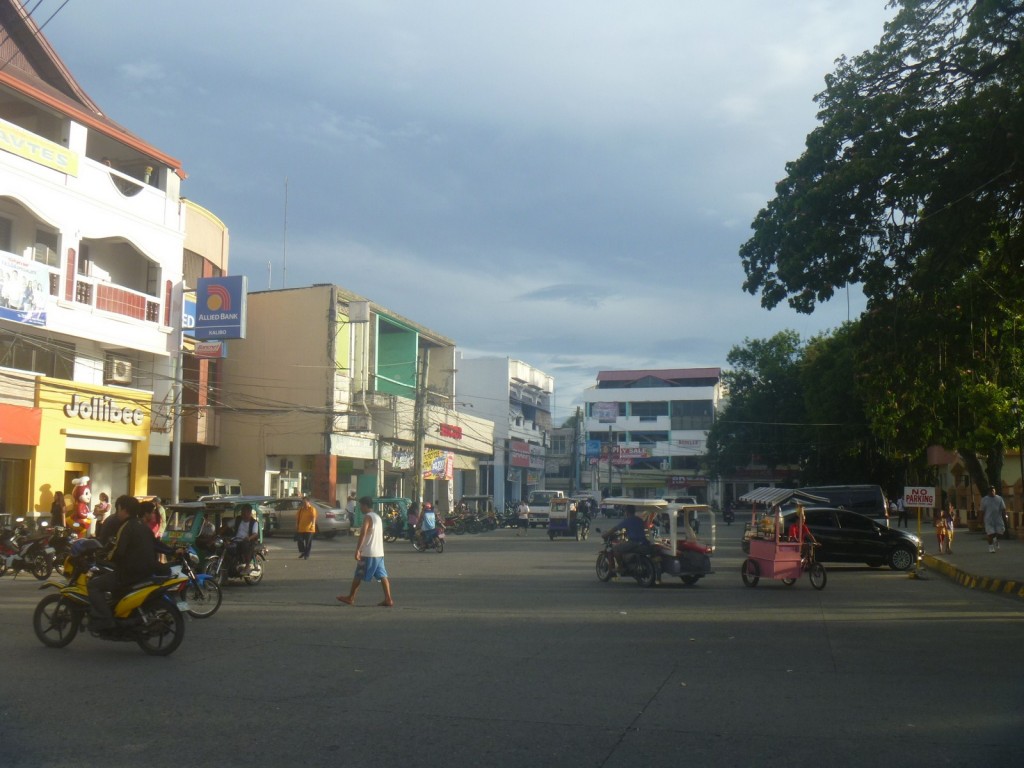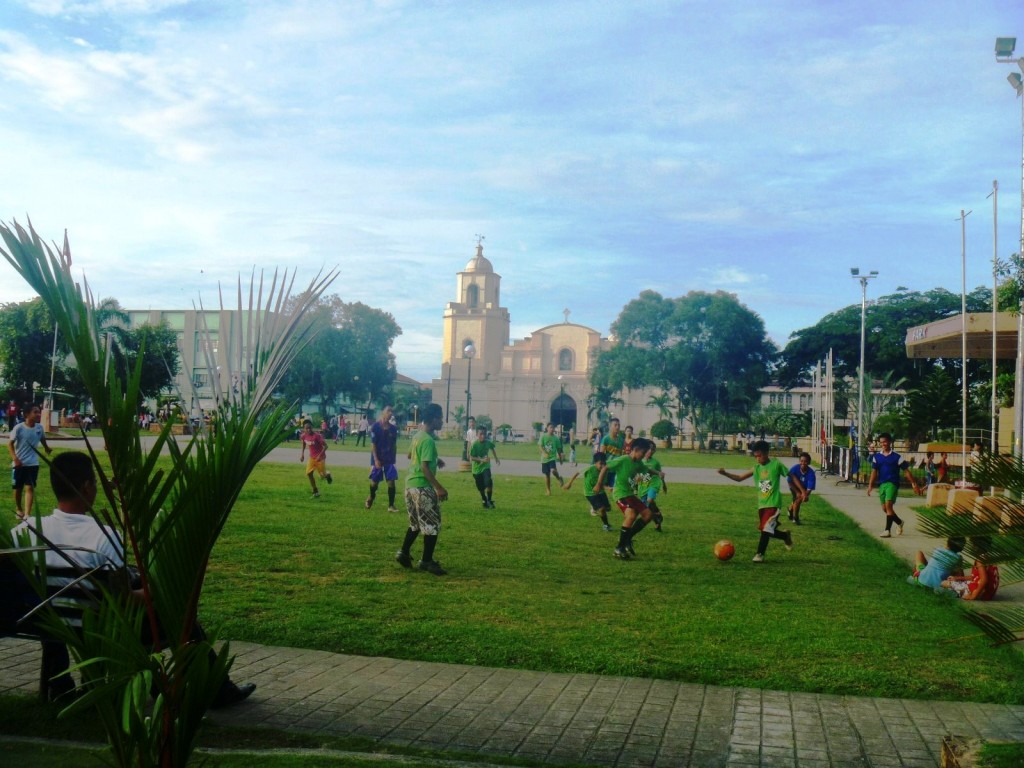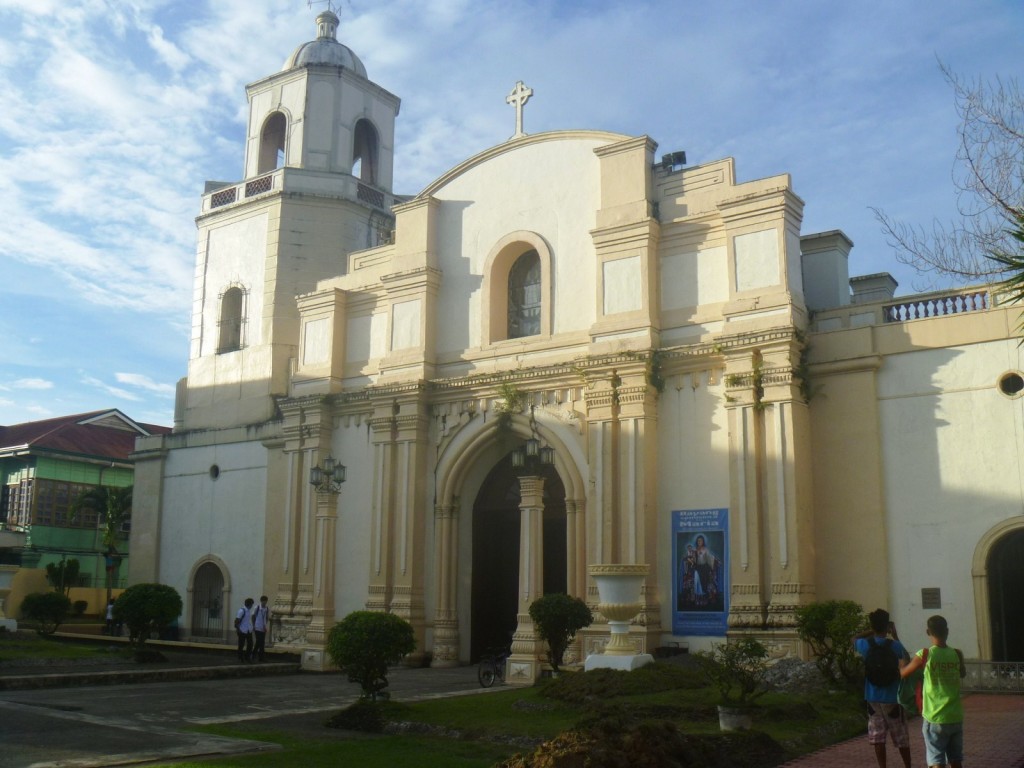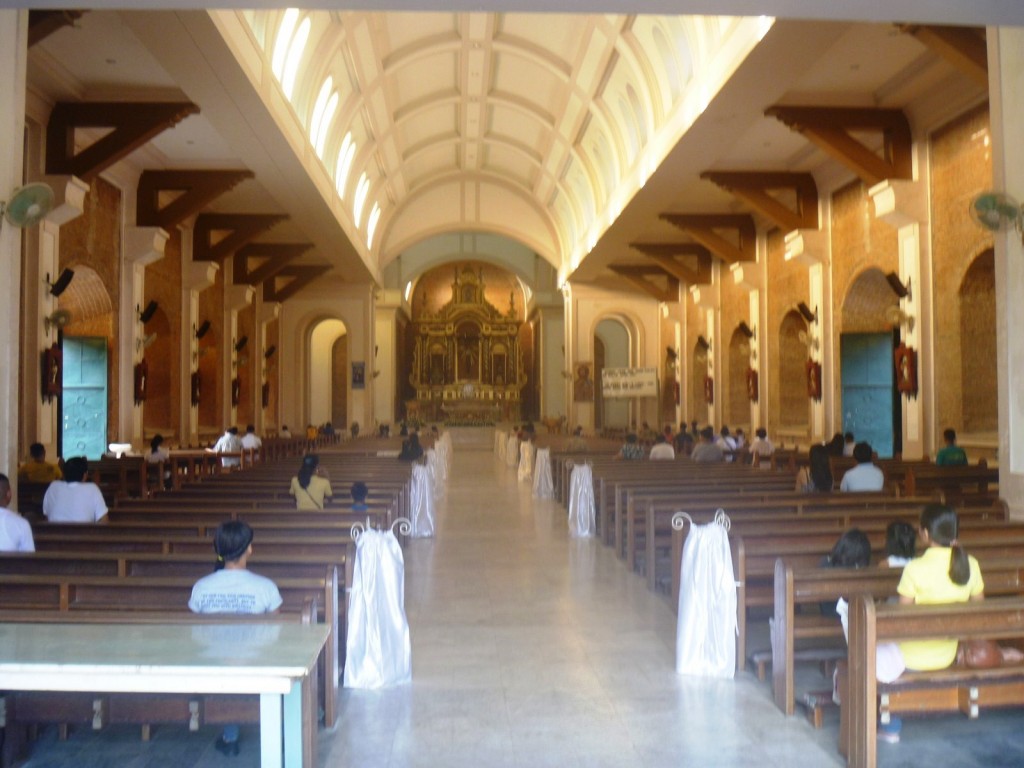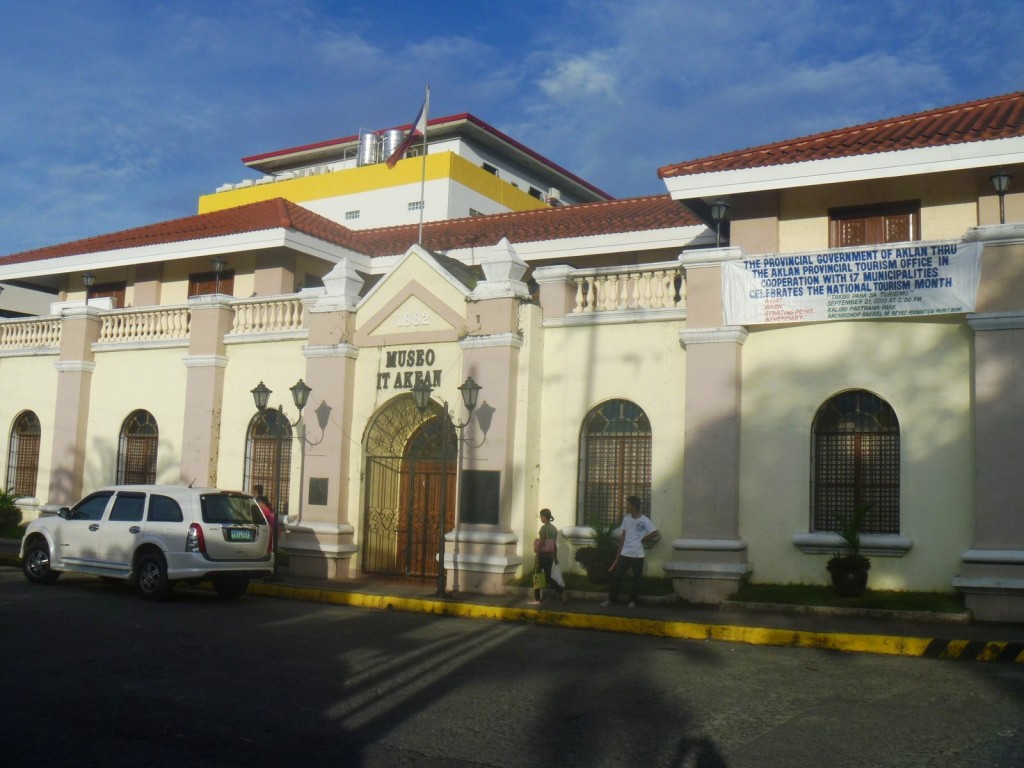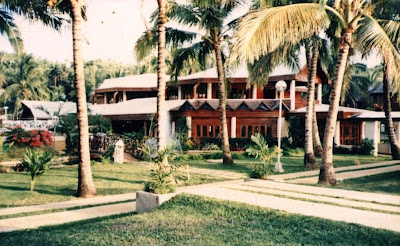It was time for Jandy and I to return to Manila and, as we still needed to buy some paint materials, I joined Grace, Marve, Cheska, John Paul and Kyle on their way to Kalibo where building materials were much cheaper than in Malay. After that, we could all have dinner prior to them dropping us off at the airport. The hardware was located at the center of town, across Pastrana Park. While Marve was attending to the purchases, I took time off to explore the the huge central plaza where all major arterial streets in Kalibo intersect.
Around the park are the Cathedral of St. John the Baptist, the Museo it Akean, a Jollibee branch; the Gil M. Mijares Bldg., the former old tribunal which now houses Kalibo Police Station, Municipal Library and the Kalibo Sto. Nino Ati-Atihan Foundation, Inc. (KASAFI).
Across the park is the Cathedral of St. John the Baptist. The town’s parish was created on September 18, 1581 with Fr. Andres de Ibarra, O.S.A., as its first parish priest. The church was first built in 1804 but, from 1947-48, a new, bigger and more sturdy church was built. After an earthquake in 1991, the church was rebuilt from 1993-97 under the guidance of Kalibo Bishop Gabriel V. Reyes.
Adjacent to the cathedral is the elegantly-designed Museo it Akean. Also called the Aklan Museum, this private museum is housed in the century-old, Spanish-era Estuylahan it Hari (“School of the King”), established in 1882. Before World War II, it was a movie theater showing silent films and later a building of the Kalibo Institute. During the war, it was converted into a Japanese garrison. After the war, it was turned into a trial court sala and a warehouse before it was recently renovated and converted into a museum in 1980.
The museum showcases the history and remains of the old civilization of Minuro it Akean as well as contemporary local art. On display are talibong swords; wood and metacraft; the memorabilia of Archbishop Gabriel M. Reyes, Jaime Cardinal Sin and Godofredo P. Ramos; pina textiles, paintings of Aklanon artists; jars; pottery; religious relics; furniture; crafts; tools and artifacts from the Spanish era, and literature of Aklan.
Museo it Akean: cor. S. Martelino and Archbishop G. Reyes Sts., Kalibo, Aklan. Admission: PhP15. Open daily, 8 AM to 5 PM.

